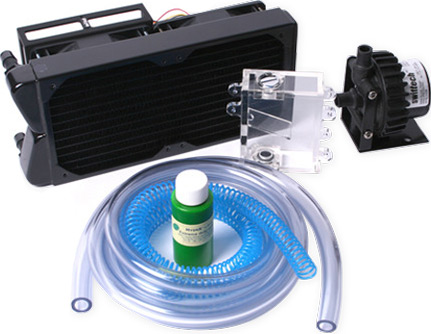How Does it Work?
Water cooling system for computers utilizes water as a coolant instead of using a fan to circulate cool air. The water is circulated by a pump through a water block which is mounted on the CPU (and sometimes additional components) and out to a radiator.
As the water is circulated around the system it picks up heat when it moves through the water block. The water is then circulated to the radiator which expels the heat.

Advantages
Disadvantages
Spillage can cause electrical short and damage the computer.
Water cooling system is more difficult to install.
Water cooling components is more expensive than air-cooling components.
Water cooling is so much more efficient than air cooling, that it easily offsets the disadvantages.
There are three basic types of water cooling systems, and the main difference is where the radiator, water pump, and reservoir are located.
The three types are:
Allows for a larger radiator and more cooling power than an integrated setup

Water cooling offers greater cooling power and ability to cool additional components.
Moving to water cooling system is an expensive task however if you are a big gamer and want to improve the efficiency of your machine it is a no brainer.